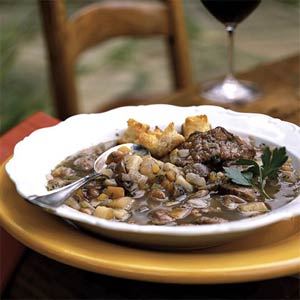

 The Accurate Reloading Forums
The Accurate Reloading Forums  THE ACCURATE RELOADING.COM FORUMS
THE ACCURATE RELOADING.COM FORUMS  Other Topics
Other Topics  Recipes for Hunters
Recipes for Hunters  Costillas de Cerdo Parrillas al Yucatán
Costillas de Cerdo Parrillas al YucatánGo  | New  | Find  | Notify  | Tools  | Reply  |  |
| one of us |
Costillas de Cerdo Parrillas al Yucatán We've recently been talking a lot about naranja agria, which comes from a specific orange: the Seville orange, also known as the "sour" or "bitter" orange: http://foodsoftheworld.activeb...ia-for-latin-cooking Because of this, I became interested in its use in cooking, the origins of which reach all the way back to medieval Spain and the orange groves of Seville - and from there back to the cradle of civilisation via the Mohammedan conquests. Wikipedia offers some useful information:
Wiki goes on to enumerate many of the uses for the various varieties of the "bitter orange" (emphasis mine):
My plan was to give this "sour orange" juice a try, using a quintessential Latin-American method: as a marinade for barbecued pork - in this case, spare ribs and baby back ribs. Of course, the first step was to acquire some naranja agria, which can be quite a challenge in Montana. I was unable to locate any locally, nor could i find it in Montana's two largest "cities," Billings and Great Falls. Further inquiries to "specialty groceries" in the capital city of Helena and the university towns of Bozeman and Missoula yielded no luck. It might be somewhere in this great state, but I wasn't able to find it. One option would be to substitute a mixture of lime, orange and grapefruit juices:
This would be perfectly acceptable, but I decided to make use of the internet and order some from Amazon: http://www.amazon.com/Badia-So...id=1334083758&sr=1-3  The product description states that it is made from Seville oranges, so it is the real deal ~ perfect for what I was looking for. When it arrived last week, I was ready to get this going, so Friday, I bought a rack of baby back ribs and a rack of spare ribs, the latter of which I trimmed St. Louis style: http://foodsoftheworld.activeb...eribs-st-louis-style I marinated the ribs overnight in a bottle of the naranja agria, to which i added a small amount of salt, cumin, granulated garlic, coriander and annato (about two teaspoons altogether). Saturday morning, I commenced with this project - the first real barbecue of the year. I began by sprucing up my modified SnP (here's an old thread describing mods in detail and in sequence): http://foodsoftheworld.activeb...brinkmann-smoken-pit The winter and the passage of time had added a little rust here and there, especially over the firebox, but no worries at all ~ when the pit heated up, I gave it a good wire brushing and then a rub-down with some lard, in 3 or 4 layers, which seasoned it beautifully, just like a cast-iron pan. This took care of the rust and brought it back to better-than-new condition. With the pit ready for its first firing-up of the year, I turned my attention to preparing my ribs. Aside from the overnight bath in the naranja agria marinade, here's a shot of everything I used: 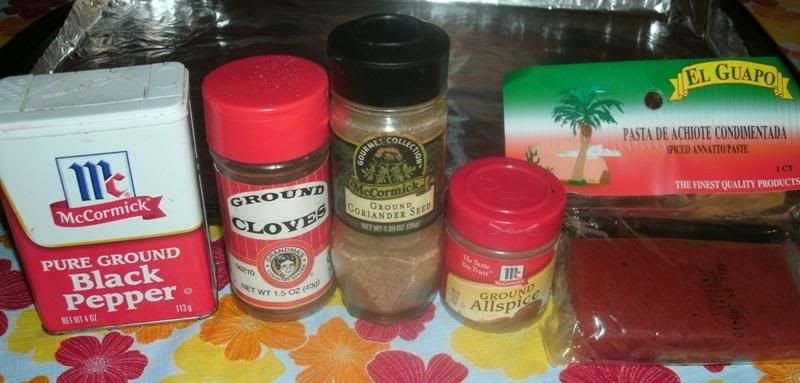 As you can see, we're not looking at anything complicated here, but the resulting flavours are full of depth and character, heightened by the citrus blast from the Seville orange juice. The medium for this masterpiece from the Yucatán was a paste made from achiote roja, a block of wonderful Latin flavours that can be found just about anywhere except where I live:  I had to go 250 miles to Billings in order to get this stuff; considering the simple-yet-wonderful ingredients, I might experiment in the future with making this on my own from scratch. One thing I wanted to do was to give a real boost to the flavours found in the achiote, so I added a few spices: 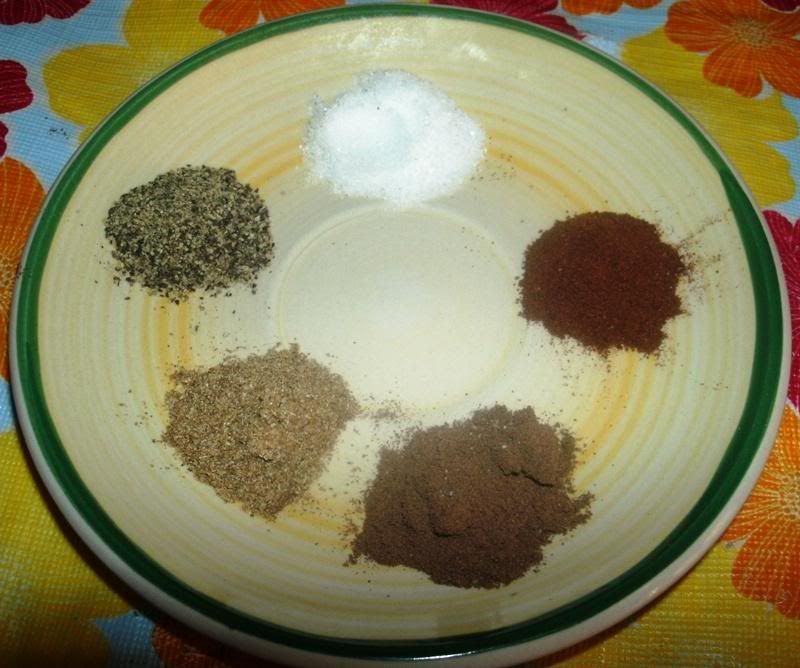 Clockwise from top: a teaspoon each (scant or generous, depending on the ingredient) of salt, ground cloves, allspice, coriander and pepper; I would also have added the same amount of granulated garlic, but for some reason, none could be found in the house. After measuring out the spices, I opened the block of achiote roja and added 2 tablespoons of the reserved naranja agria marinade: 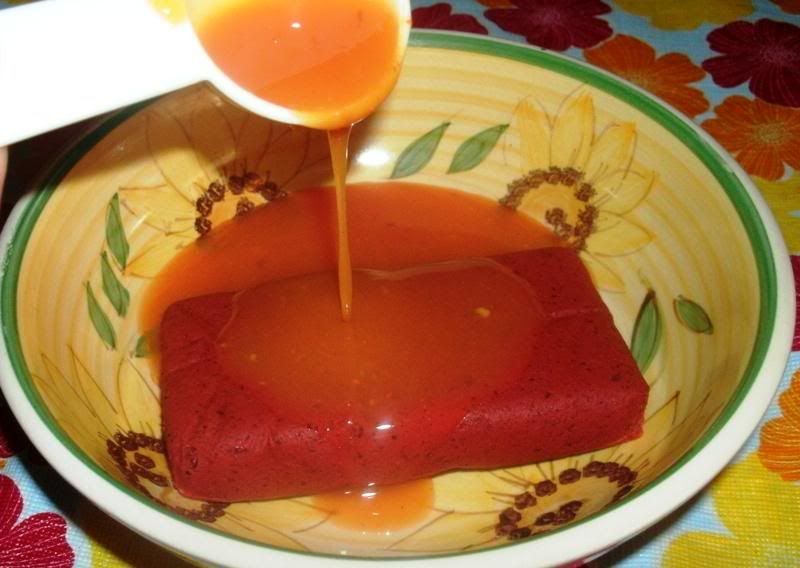 I then added the spices and i stirred it all together to make a beautiful-looking, deep-crimson paste: 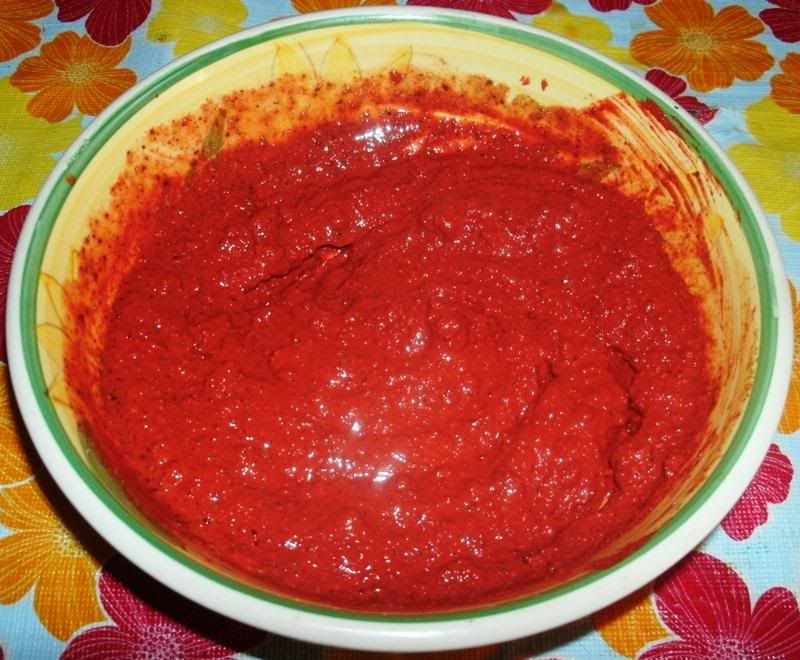 Next, I turned my attention to the ribs themselves:  Left to right: a rack of baby backs, the trimmed brisket section and the st. louis-trimmed rack of spare ribs. At first glance, overnight "might" be a little too long for marinating "thin" cuts like ribs in the naranja agria; 4 to 6 hours might be better, but this was also fine. Anyway, I drained and reserved the marinade, then patted the three sections dry with paper towels. Next, I slathered the achiote paste on both sides of the three sections: 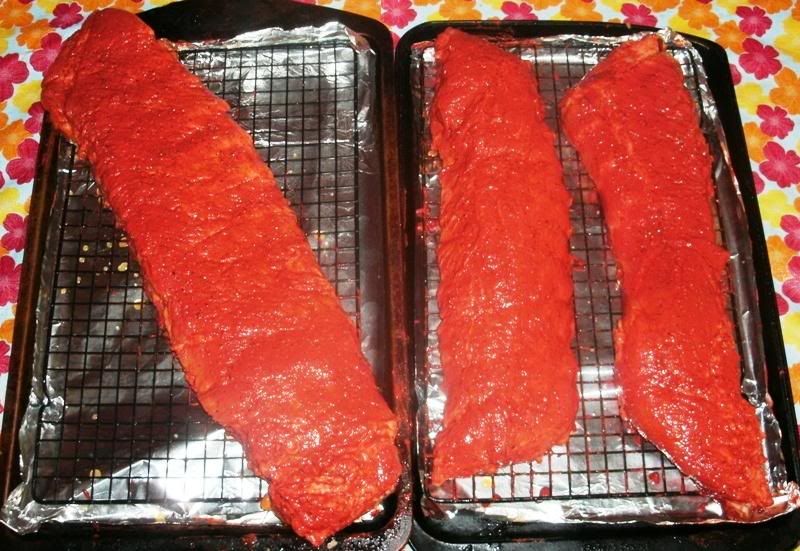 I gotta be honest, I absolutely LOVE the look of these ribs with the achiote paste: 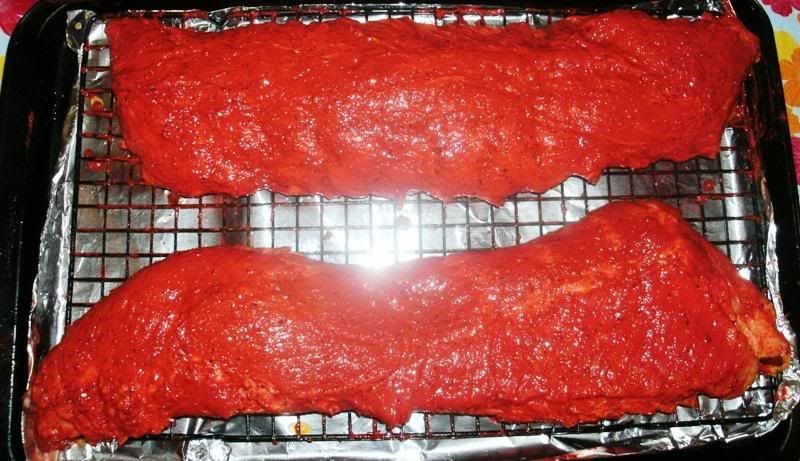 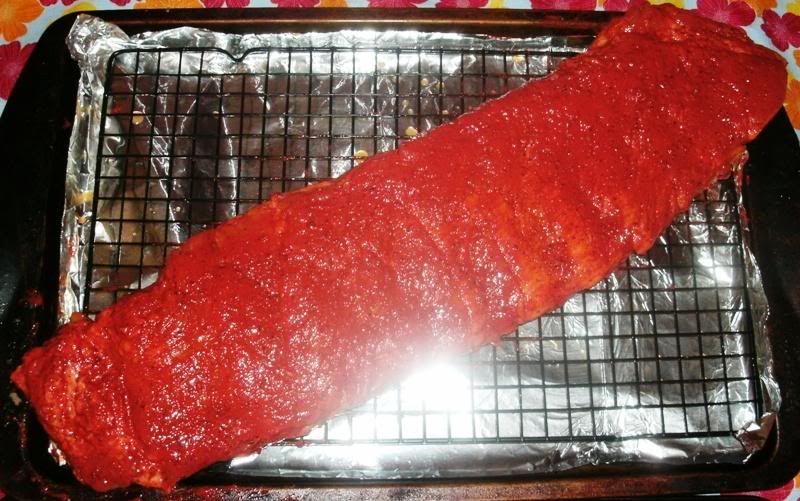 I set the ribs in the refrigerator in order to draw in the stunning Latin flavours while I heated up the pit; when the temperature was right and the hickory smoke was thin and blue, I brought them out and prepared to toss them onto the grate: 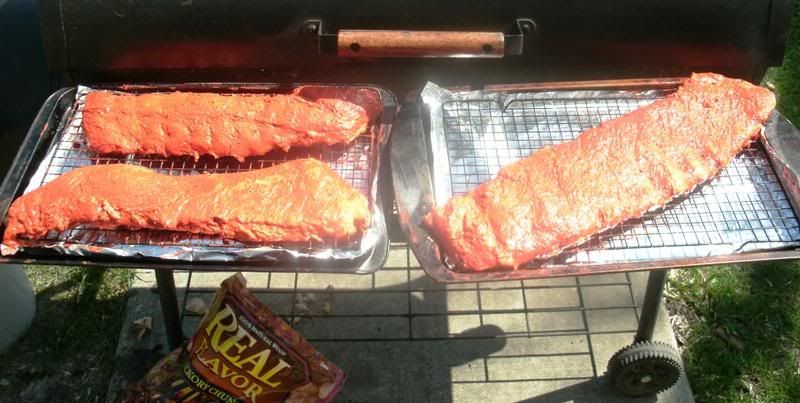 Once they were on, I threw on some old blues (supplemented by some occasional Ritchie Valens), cracked open a beer, and got down to the business of barbecue while I contemplated what to do with the rest of the reserved marinade in regards to a mop, baste or glaze. I also made a mental note to myself: when cleaning/brushing/sprucing up the pit, be sure to give the grates a final wipe-down after cleaning and seasoning in order to prevent any blackening of your beautiful ribs! An hour into the smoke, my previously-sketchy plan began to coagulate and come into focus. I had been toying with the idea of spritzing with orange juice, plus a little oilve oil, but as it turned out, the kids drank all of the orange juice, so decided to forego the spritzing. I did, however, brush just a tiny sheen of olive oil on the ribs, in order to tide them over until they started to render their own fat and baste themselves. Here they are after about an hour and a half over the hickory: 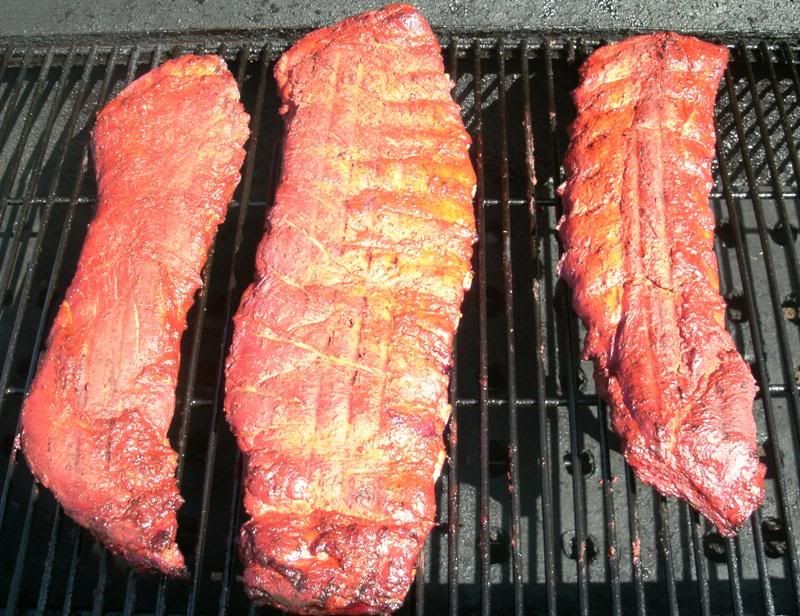 With no mop or baste this time around, I elected to concentrate on a finishing glaze, and came up with something that I think worked pretty well. I took the remaining naranja agria marinade, which coincidentally totaled one cup, and added a cup of dark brown sugar and a pinch or two each of allspice, nutmeg and ground cloves. After simmering it for about 10 minutes, I sampled it and found it to be really, really good. The aroma reminded me of spiced Grand Marnier, or some other orange liquer, and the taste was sweet/sour with a just hint of spice - not bad for something i made up on the spur of the moment. It was missing just some little thing, and after a moment I put my finger on it: ginger; so I added maybe half a teaspoon of that and called it good. As it turned out, this concoction did a great job of not only glazing the ribs in their final hour or two of cooking, but also complimenting the flavours of the achiote very well. Another hour in, and the ribs were coming along nicely:  I turned them over every now and then, and added hickory or charcoal as needed to maintain a good cooking temperature, in the 240-250-degree range. When I judged they were about two or three hours away from being done, I began to "paint" the ribs with the spiced-orange glaze, going in thin layers and allowing them to "set" for a while before adding another layer. Here we are at the third or fourth layer: 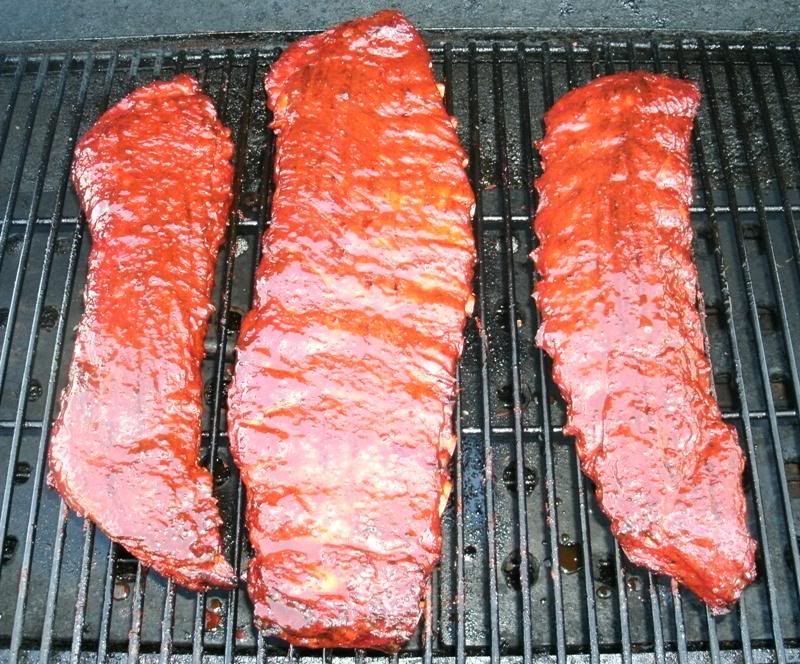 When they really were getting close to being done, I moved them a little closer to the firebox to give them some direct heat and painted on a thicker layer of the glaze: 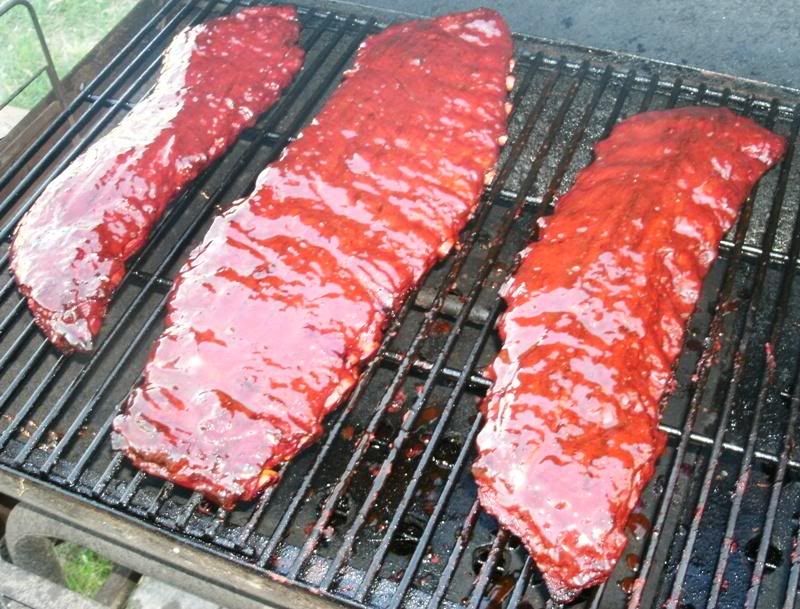 The higher heat worked its magic, and soon the glaze was bubbly-crusty carmelised onto the ribs: 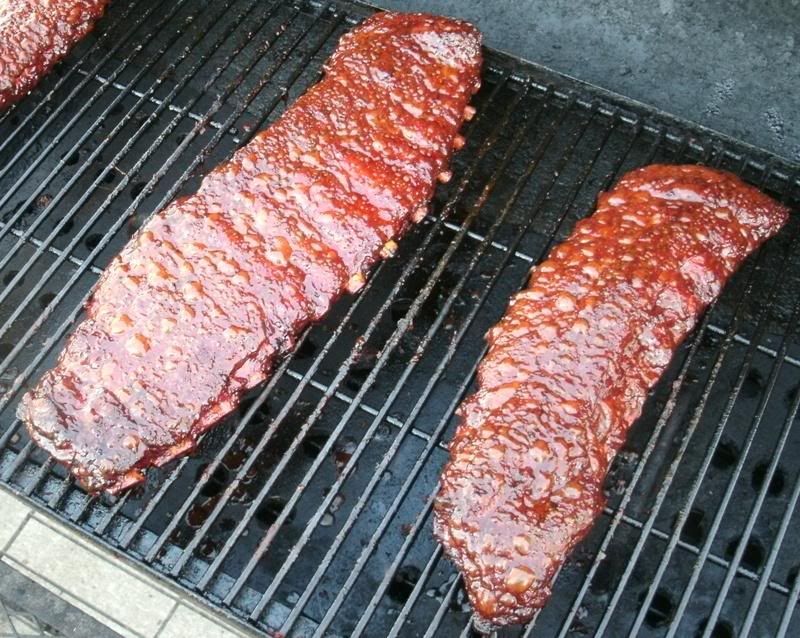 This was my cue that it was time to remove them from the heat, so I did so, and brought them into the house, where my oldest son was heating some Bush's baked beans as a side dish. Here's a rack cut from the baby backs: 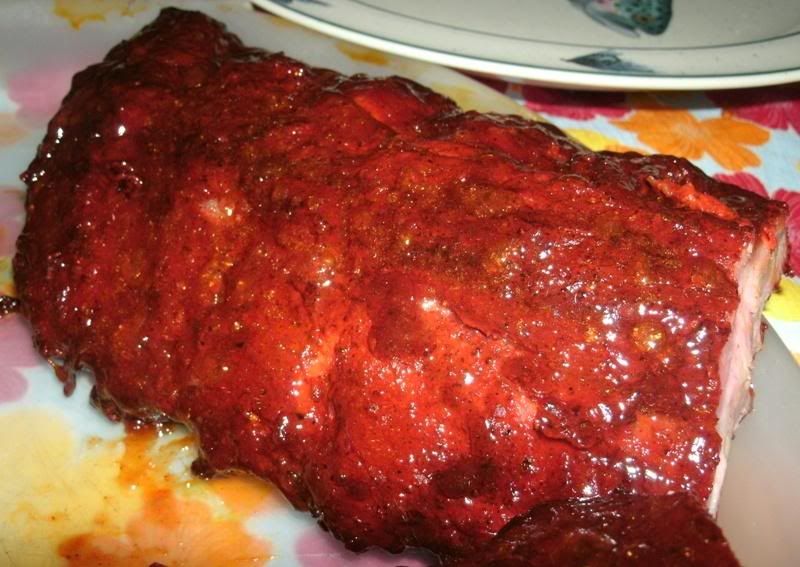 Just take a look at all the goodness going on there! And here's a little more eye-candy, this time from the spares: 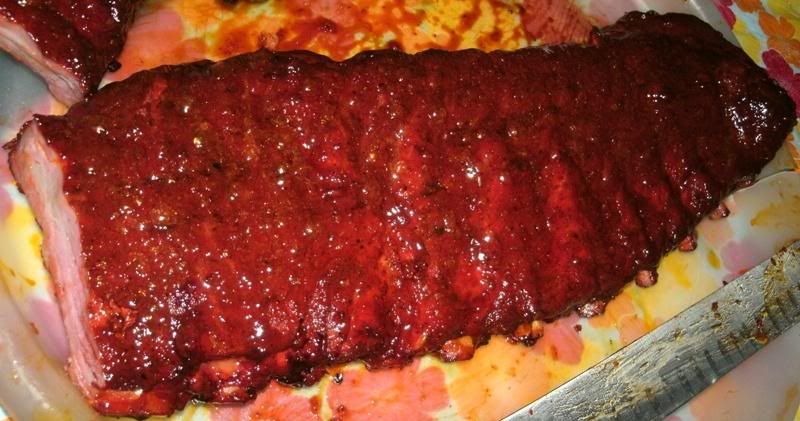 The colours here were amazing; the deep, rich red from the achiote was perfectly blended into the warm oranges and caramels brought about by the glaze. Smoke penetration was excellent, with a nice, rich smoke ring adding to the colours, and the aroma was an exotic melange of citrus, spice and smoke that added up to something far beyond the sum of its parts. This wasn't just barbecue, this was an experience to be forever cherished and repeated as often as possible. I cut the ribs into sections along the bones and served them in simple fashion with the beans:  I could have embellished these with a little green from a grilled spring onion, or perhaps a sprinkling of chopped cilantro, but in truth, the family simply wanted to eat, so I fed them. Flavours were amazing - they were everything I described above, and more. The ribs were done perfectly, with nearly all of the fat rendered out, a crispy-glazed exterior and just a hint of a tug from the bone. Everyone in the family enjoyed these ribs, and there were no leftovers. It's pretty darn easy and only takes a small amount of effort to take a a plain ol' cut of pork and transform it into something that is absolutely wonderful. The traditions Yucatán cooking are all there, from the bright citrus highlights, down to the warm, spicy undertones, down to the deep, smoky foundation. I don't think the seasonings, spices and other ingredients (besides the ribs) cost more than 10$, and most likely just about everything is already in the pantry, or at least within easy reach for most people, so there isn't much reason not to give this a try. | ||
|
| One of Us |
Another winner there.With some nice bread...yum yum. Best- Locksley,R "Early in the morning, at break of day, in all the freshness and dawn of one's strength, to read a book - I call that vicious!"- Friedrich Nietzsche | |||
|
| one of us |
I made these again this past weekend, and they were every pit as delicious and flavourful as they were the first time. They are becoming a favourite way to do ribs at Casa de TasunkaWitko, and one taste, with its wonderful Yucatán profile, will tell you why. For those of you who are "on the fence" about trying this method, I really, really recommend it for something that is totally different and wildly delicious. If you are worried about finding the two key ingredients (naranja agria and achiote), don't despair - if they are unavailable in your area, you can easily make your own achiote, as well as a perfectly-acceptable naranja agria substitute, both of which I will explain below. For this preparation, I used two racks of Saint Louis-trimmed pork spare ribs, along with their trimmings. I did not want to change too much, since they were so good the first time, but I did try a few minor tweaks: a) Rather than soak the ribs overnight in a big bowl of naranja agria, I simply brushed some on the ribs, then applied the achiote paste. I then covered them in saran wrap and placed them in the refrigerator overnight. I figured this would avoid the "pork ceviche" effect that began to happen last time, and was proven correct. I will be doing this from now on. b) I did add a teaspoon of garlic powder, along with the other spices used above, to the achiote paste. This had a positive effect on the achiote, giving a nice boost and rounding out the profile a little better. I will be doing this from now on. c) Since I had slightly more pork to work with this time, I used a quarter-cup of naranja agria, rather than the two tablespoons used above. This resulted in a slightly thinner paste, but it worked just fine. d) For the sake of experimentation, I added some raw (turbinado) sugar to the paste, maybe two or three tablespoons. My thinking was that this would balance out the warm, spicy kick that the achiote has. I didn't notice much difference, perhaps because I didn't add enough to make an impact, but it certainly didn't hurt anything. I'll try it again in the future, along with some that has no sugar added, for comparison. e) For the finishing glaze, I kept it simple. I used in cup each of regular orange juice and dark brown sugar. This was just fine, and did the job quite well, providing a nice sheen and wonderful depth to the look of the ribs; however, it wasn't quite as complex as the glaze I made the first time - this could be good or not-so-good, depending on one's point of view. Either way works for me, and in the future, I will use whichever method strikes me at the time; or, perhaps, I will try something new, as long as it adheres to the Yucatán theme. In any case, everything else was pretty much the same as before. Following our discussion here: http://foodsoftheworld.activeb...meats_topic2373.html I used a water pan in my smoker, to provide humidity to the cooking process without braising the ribs into oblivion. The result was as I hoped it would be: moist, juicy ribs with a great bark and a deep smoky richness that was neither overpowering nor bitter. The smoke ring was very nice, nearly all the way through the ribs and providing great colour as well as, I believe, an incredible dimension to the final product. I did not do any spritzing with this barbecue, since it seemed unnecessary last time. I did brush on one light coat of olive oil on both sides about an hour into the cook (after the achiote paste had a chance to set). I believe this began a nice basting effect, providing some browning and protection for the heat from the heat until the ribs began rendering their own fat so they could baste themselves. Also, at this point, I began turning and rotating the ribs every time I added some charcoal and/or hickory to the firebox (about once every hour). I smoked the ribs to the point where they drew away from the bone, similar to the pictures above, applying glaze in very thin layers during the last hour or two of cooking, and again right as they came off the heat. I then cut the ribs into individual "riblets" and served them with pasta salad and corn-on-the-cob. Results were probably not technically "perfect," but they were dang close, in my opinion. The ribs had the same, beautiful orange-caramel colour on the outside, and when cut, I could see that smoke ring was nearly all the way through. The ribs were tender and juicy down to the bone, with just a slight tug and no mushiness or overly-soft texture. this is all well and good, but the real test is the taste, and I am happy to report that they were very, very good, with a complex, sweet/tart/spiciness provided by the naranja agria and achiote, carried by the smoky goodness from the hickory and underscored by the wonderful extra SOMETHING that happens when meat is cooked over fire. The glaze provided an extra layer of sweet/tart, along with a nice crackle and beautiful, deep mahogany sheen. I was quite pleased with them, and so was the family, as well. The beautiful Mrs. Tas, who is usually at best neutral toward (or at worst disgusted by) my barbecue, even when prepared well, enjoyed them very much, suggesting that I use this method for the local rib cook-off that will be held later this month. I'm reluctant to participate in it; however, if I did, I have no doubt that this would certainly be a unique - and possibly winning - entry. Anyway, after doing this twice, I think it is fair to say that it is a method worth recommending. If anyone is interested and would like to try this, I am pretty sure that you and your family and/or dinner guests will be impressed. As I said before, if you cannot find any naranja agria or achiote in your area, do not despair; you can make your own achiote. To make achiote, you have two options, red or green. I love the red for its dramatic, crimson appearance as well as the little extra something provided by the annatto; however, I do believe that green achiote has some real advantages if you want something that packs more of a flavour punch and a burst of spices. Generally, I start with red and then add many of the ingredients in green, for a hybrid that combines the best of both, I think. To make achiote roja, simply combine these ingredients in a mortar-and-pestle or similar device (or use ground spices): 1/2 cup annatto seeds 10 toasted cloves garlic 2 tablespoons coriander seeds 1 tablespoon kosher salt 1 tablespoon cumin seeds 1 tablespoon black peppercorns 6 allspice berries 3 cloves To make achiote verde, combine: 1 teaspoon freshly ground allspice 2 teaspoons freshly ground black pepper 1/2 cup ancho chile powder 4 teaspoons kosher salt 1 tablespoon toasted and ground dried Mexican oregano 3 cloves garlic, pan-roasted until brown and soft, then peeled 1/2 medium-sized white onion, thickly sliced, pan-roasted until brown and soft For either of these spice mixes to reach their full flavour potential, they need to be combined with some form of acid. Various types of vinegars can be used, I suppose - but to me, citrus juices work better and provide a brighter, more authentic touch. If you have no naranja agria available to you, then you can make a perfectly-acceptable substitute: 1/2 cup fresh orange juice 1/4 cup fresh grapefruit juice 1 tablespoon fresh lime juice Mix all of the juices together in a jar, cover, and store in the refrigerator. The juice is best used fresh or within 2 days. This makes 3/4 of a cup, and you will probably use anywhere between 2 tablespoons to 1/4 cup of it if you use a store-bought achiote block. If you use one of the recipes above for achiote (or a combination of the two), I am not sure how much you will need - enough to make a paste to coat the ribs, is the best answer I can give you. As always, if anyone has any questions, please let me know, and if you do try them, take a few pictures and let me know how you liked them! Ron | |||
|
| One of Us |
Great post, such detail on this "how to". Now if you had included black beans and Modelo...... | |||
|
| one of us |
Tried your recipe yesterday. They came out great. Being in Houston, all the ingredients were easy to come by. Thanks, Bob | |||
|
| one of us |
hey, bob - glad you liked it! it takes a little work, but not too much, and the results are certainly worth it. if anyone else wants to give it a shot and has any questions, post them here, and i'll do my best ~ | |||
|
| one of us |
In a similar way Moroccans use lemons for many dishes instead of bitter orange. They often preserve them and these you can purchase easily online or make them yourself if you can get unsprayed lemons . I add this in part for the many like myself who are allergic to orange but not lemon. | |||
|
| one of us |
yep - good stuff, and very easy to make: 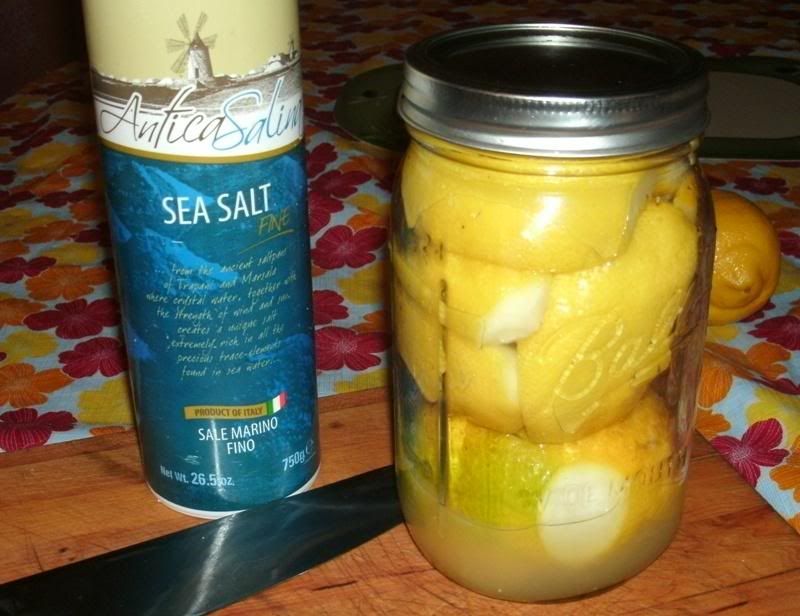 http://foodsoftheworld.activeb...lemons_topic479.html i recently used them for a chciken tajine that was out of this world. going to try a similar dish with venison, next.... | |||
|
| one of us |
I can't remember trying lemon with venison except 'gremolata' [chopped lemon rind and parsely] on things like 'osso buco'[braised shank of veal or venison]. Lemon is a favorite addition to braised goose. | |||
|
| one of us |
i'll lethca know how it is sometime before Christmas! | |||
|
| Powered by Social Strata |
| Please Wait. Your request is being processed... |
|
 The Accurate Reloading Forums
The Accurate Reloading Forums  THE ACCURATE RELOADING.COM FORUMS
THE ACCURATE RELOADING.COM FORUMS  Other Topics
Other Topics  Recipes for Hunters
Recipes for Hunters  Costillas de Cerdo Parrillas al Yucatán
Costillas de Cerdo Parrillas al Yucatán

Visit our on-line store for AR Memorabilia

